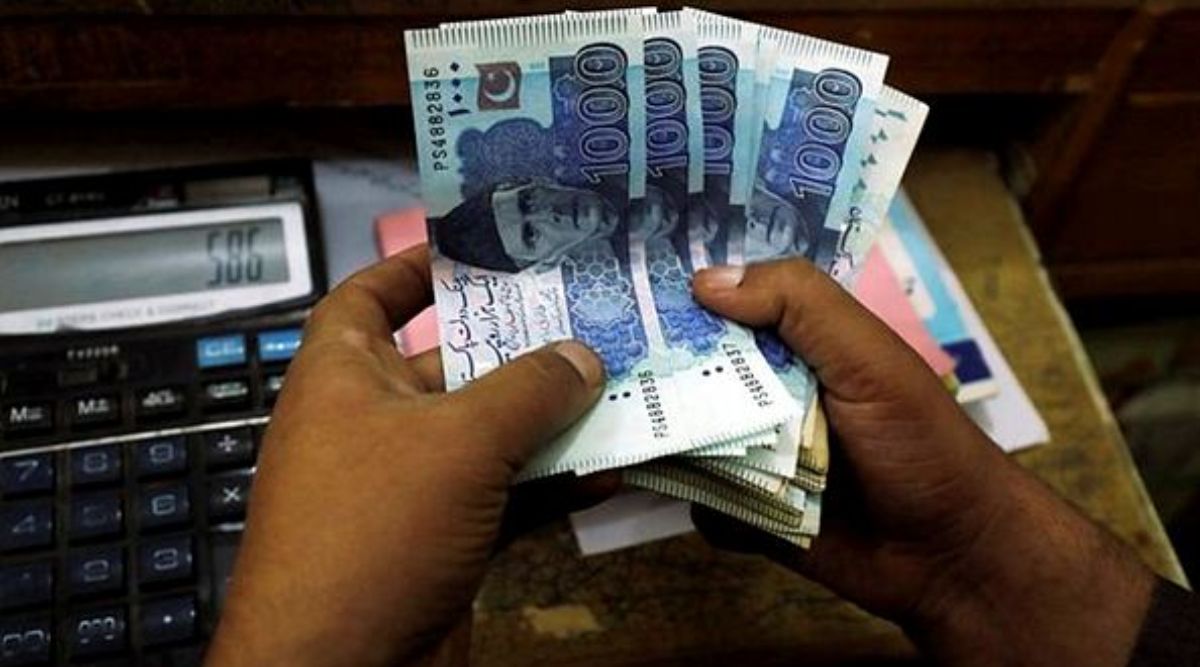The Pakistani rupee has hit a historic low against the US dollar due to increased demand for the dollar following eased import restrictions and political uncertainty ahead of the general elections.
The depreciating exchange rate of the Pakistani rupee against the US dollar is leading to a potential economic disaster, with increased inflation, higher prices for petroleum and fuel, and a rise in poverty and unemployment.
The foreign exchange reserves of the State Bank of Pakistan fell below $8 billion for the first time in five weeks, dropping to $7.93 billion, which may pose challenges as the country faces significant debt servicing payments.
The Pakistani stock market closes lower due to concerns about the weak rupee and a bleak economic outlook, despite some support from MSCI raising Pakistan's weight in its Frontier Markets Index.
The Pakistani rupee weakened further against the US dollar in the interbank market due to higher demand and uncertainty, while the open market remained stable; however, insiders noted that currency dealers were selling the dollar at higher rates in the open market.
The rupee's decline against the US dollar is being attributed to the powerful influence of the grey market and the International Monetary Fund's involvement in Pakistan's financial system, leading to a loss of control over the exchange rate and economic uncertainties.
The Pakistani rupee has fallen below 300 to a US dollar due to factors such as the rise of the dollar, uncertainty surrounding general elections, and a political/judicial/constitutional crisis, resulting in eroded business confidence, increased inflation, and reduced industrial output.
The US dollar dropped to a two-week low against the euro and other currencies after data revealed lower than expected private payroll growth in August, leading to speculation that the Federal Reserve will halt interest rate increases.
The Pakistani stock market experienced significant losses in response to rumors of an interest rate hike, economic uncertainty, and the depreciation of the rupee.
The Pakistani rupee is expected to trade within a narrow range against the dollar in the upcoming week following its recent sharp depreciation, although some analysts anticipate continued pressure on the currency due to capital withdrawals, political unrest, and economic uncertainty.
The current economic crisis in Pakistan is driven by high inflation, mismanaged policies, and failure to ensure price stability, leading to a weakened currency and a struggling middle class, but implementing radical reforms such as demonetization and swapping out foreign currency debt can potentially alleviate the situation and revive the economy.
The Indian rupee hits a 10-month low against the US dollar due to concerns over rising oil prices and a decline in Asian currencies.
The rupee rebounded in the open market as a crackdown on the informal currency market helped narrow the gap between interbank and open-market rates, bringing it closer to the IMF's target of 1.25%. The State Bank of Pakistan has also introduced structural reforms for exchange firms and increased the minimum capital requirement, while ordering banks to set up separate entities for forex transactions.
Gold prices in Pakistan continued to decline for the fourth consecutive day, in line with international rates, as the domestic price of 24 karat gold fell by Rs5,800 per tola and Rs4,972 per 10 grammes to settle at Rs216,500 and Rs185,614 respectively, while the price of silver 24 karat dropped by Rs50 per tola and Rs42.87 per 10 grammes to settle at Rs2,650 and Rs2,271.94 respectively; meanwhile, the rupee gained Rs2.03 against the US dollar in the interbank trading, closing at Rs304.94.
The Indian rupee could reach record lows against the U.S. dollar if oil prices continue to rise, according to the head of global foreign exchange at Jefferies, Brad Bechtel, although he believes the rupee will be one of the more stable currencies in emerging markets. The rupee is currently moving between 83 and 85 against the U.S. dollar, and if oil prices were to fall, it could fall close to the 82 levels.
The Pakistani rupee's rise against the dollar is attributed to a crackdown on hoarding and illegal outflows of the greenback as well as increased vigilance in the Afghan transit trade.
Pakistan's central bank is expected to increase interest rates in order to address high inflation and bolster foreign exchange reserves, which have led to a record low value for the rupee. A Reuters poll shows that 15 out of 17 analysts are forecasting a rate hike, with some expecting an increase of at least 150 basis points. The country's economic recovery is being challenged by IMF loan conditions, import restrictions, and subsidies removal, which have caused spikes in energy prices and elevated food inflation.
The Pakistani military's crackdown on the black market has led to a significant influx of dollars into the interbank and open markets, resulting in the recovery of the Pakistan rupee and its strengthening beyond the official rate, with the campaign being credited to army chief General Asim Munir.
The Pakistani rupee has depreciated significantly in the first three weeks of the interim government's tenure, reaching a record low and making it the worst-performing Asian currency this quarter, due to factors such as a change in government and high inflation. The State Bank of Pakistan is implementing measures to address the economic challenges, including reforming the exchange rate and modernizing the banking system.

